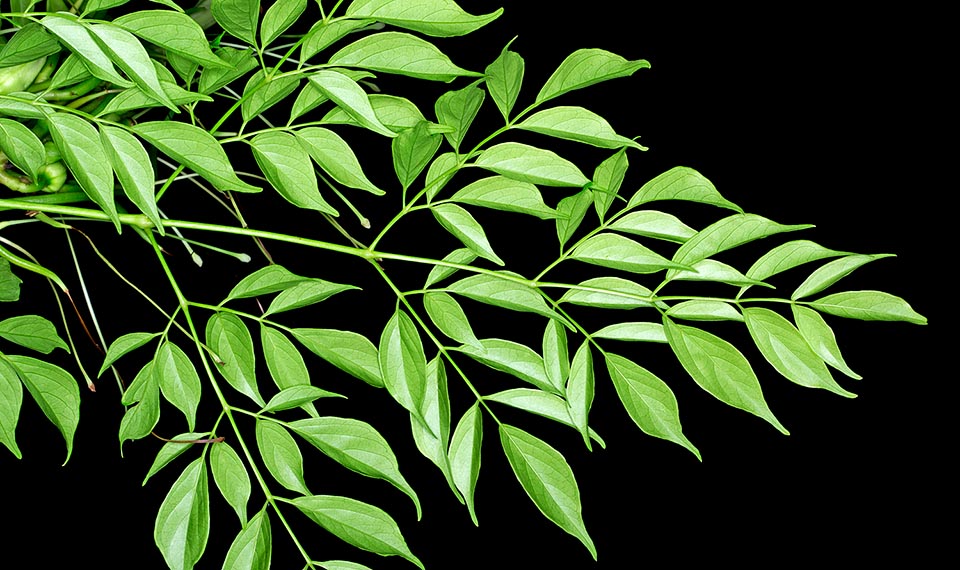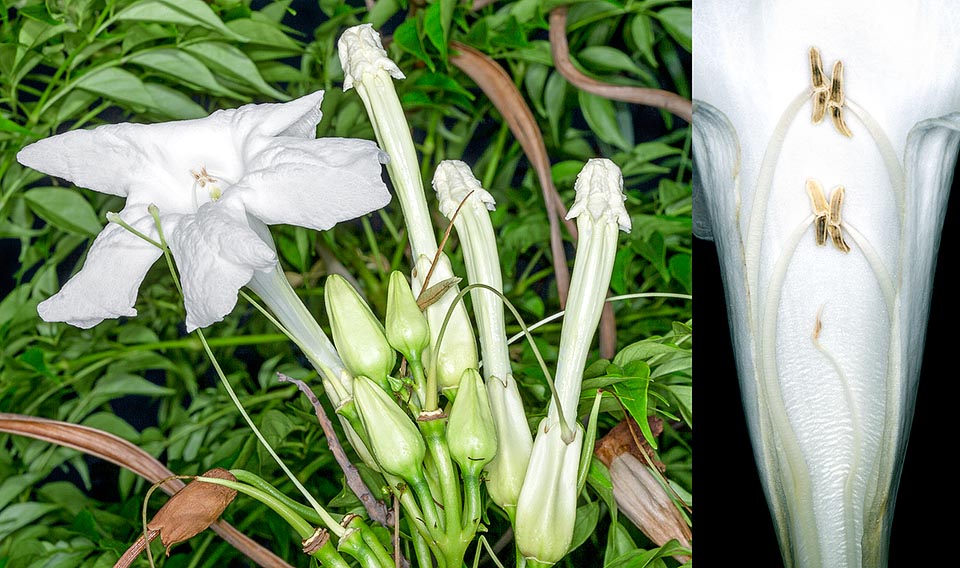Family : Bignoniaceae

Text © Pietro Puccio

English translation by Mario Beltramini

Radermachera sinica is also called serpent tree due to its characteristic curved fruits © Giuseppe Mazza
The genus is dedicated to the Dutch botanist Jacob Cornelis Matthieu Radermacher (1741-1783); the name of the species is the Latin adjective “sinicus, a, um” = of China, with reference to one of its origin places.
Common names: China doll, emerald tree, serpent tree (English); cai dou shu (Chinese); sendan kisasage (Japanese).
The Radermachera sinica (Hance) Hemsl. (1905) is an erect evergreen tree, 10-30 m tall and trunk, of up to about 80 cm of diameter, with greyish to pale brown wrinkled bark.
The leaves are opposite, bi-tri-imparipinnate, 20-70 cm long and 18-25 cm broad, with ovate-elliptic leaflets with usually entire margin, or irregularly and slightly crenate, and caudate-acuminate apex, 4-8 cm long and 2-3 cm broad, coriaceous, of intense green colour and glossy above.
Terminal panicle inflorescences or axillar at the apices of the branches, erect, 25-35 cm long, bearing bisexual white or pale yellow flowers, fragrant by night, of 6-8 cm of diameter. Campanulate calyx, 2-3,5 cm long with 5 triangular lobes having pointed apex, 0,4-0,6 cm long, of pale yellowish green colour. Corolla with imbutiform tube, 7-11 cm long, and 5 irregular curved and wavy lobes, 2-4 cm long and about 2 cm broad, and 4 didynamous stamens (two longer and two shorter).
The fruit is a cylindrical streaked, curved capsule, 30-70 cm long and about 1 cm broad, containing several ellipsoid winged seeds, 2-3 cm long and 0,5-1 cm broad, wing included. It reproduces by seed, placed superficially in draining loam rich of organic substance, maintained humid but without stagnations, at the temperature of 26-28 °C, with germination times of 2-4 weeks; it propagates also by cutting in summer.
Species of easy cultivation and fast growth with particularly ornamental foliage and the big flowers, cultivable in the tropical, subtropical and warm temperate climate regions, in full sun or partial shade, in a location protected from the strong winds; it can be utilized as isolated specimen, in group, for border screens and as road tree.

Native to the Asian tropical forests, has emerald leaves, very decorative and reaches the 30 m of height © Giuseppe Mazza

The perfumed night flowers, fall just after dawn. Right, close-up of the imbutiform sectioned corolla showing the pistil and four didynamous stamens © Giuseppe Mazza
Synonyms: Stereospermum sinicum Hance (1882); Radermachera tonkinensis Dop (1926); Radermachera borii C.E.C Fisch. (1940).
